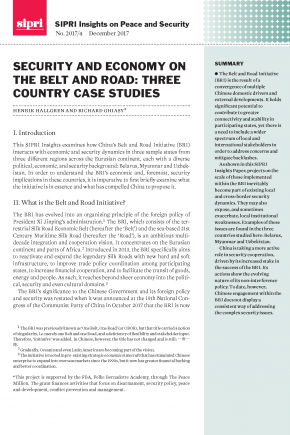Security and Economy on the Belt and Road: Three Country Case Studies
The Belt and Road Initiative (BRI) is the result of a convergence of multiple Chinese domestic drivers and external developments. It holds significant potential to contribute to greater connectivity and stability in participating states, yet there is a need to include a wider spectrum of local and international stakeholders in order to address concerns and mitigate backlashes.
As shown in this SIPRI Insights, projects on the scale of those implemented within the BRI inevitably become part of existing local and cross-border security dynamics. They may also expose, and sometimes exacerbate, local institutional weaknesses. Examples of these issues are found in the three countries studied here: Belarus, Myanmar and Uzbekistan.
China is taking a more active role in security cooperation, driven by its increased stake in the success of the BRI. Its actions show the evolving nature of its non-interference policy. To date, however, Chinese engagement within the BRI does not display a consistent way of addressing the complex security issues.
The project was carried out in collaboration with the International Council of Swedish Industry (Näringslivets Internationella Råd, NIR), and it was supported by the FBA, Folke Bernadotte Academy, through The Peace Million. The grant finances activities that focus on disarmament, security policy, peace and development, conflict prevention and management.
I. Introduction
II. What is the Belt and Road Initiative?
III. Why has China introduced the Belt and Road Initiative?
IV. Notable security implications
V. Three country case studies
VI. Conclusions


